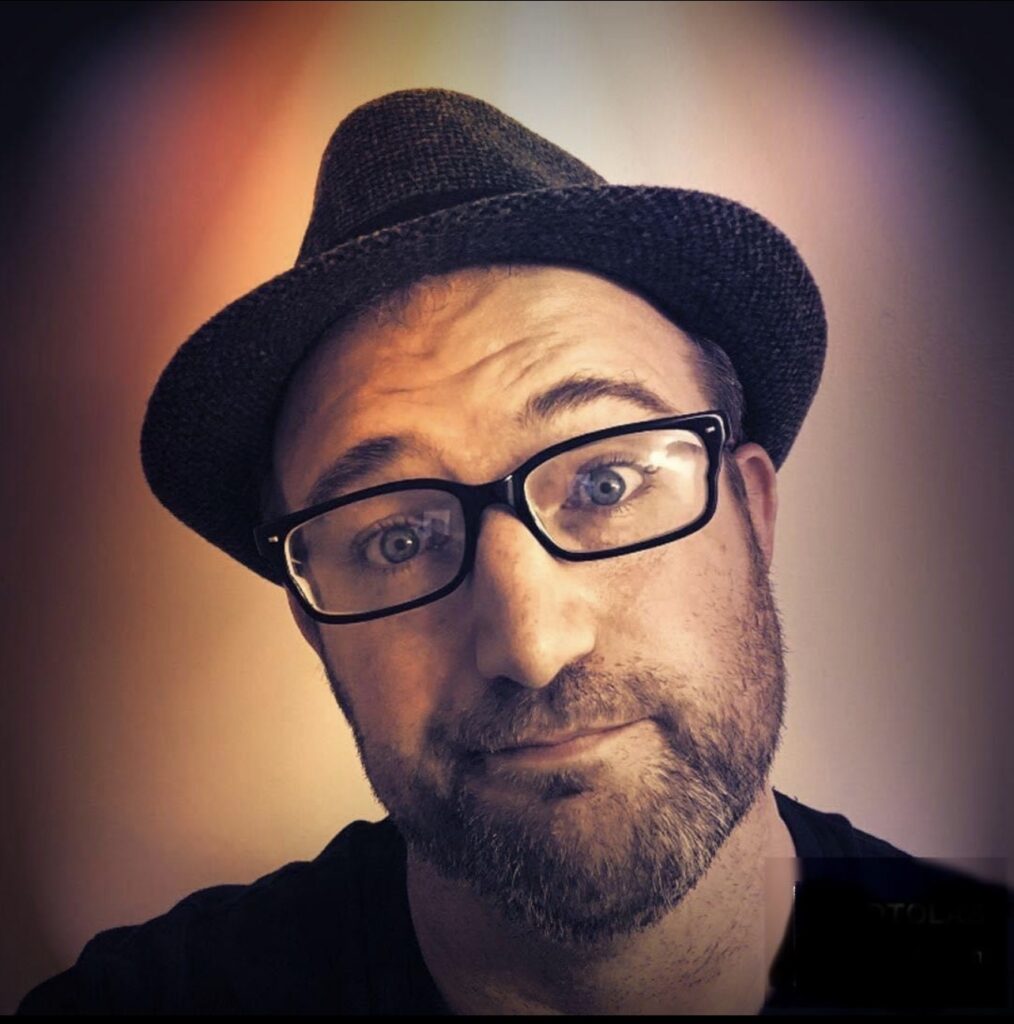Take2IndieReview sits down with writer and director Eric Swinderman to discuss his feature film The Enormity of Life.
Where were you born and raised?
I was born in a fairly small town about two hours south of Cleveland, Ohio called New Philadelphia. A lot of the movie’s small details were inspired by my upbringing there. The carousel, which is an integral part of the film was loosely based on a place called Tuscora Park. In fact, in the flashback scene to Emily Kinney’s childhood, we actually were able to film it there.
At what age were the arts introduced to you?
I wasn’t so much “introduced to the arts” as I just kind of discovered them. My mom was a single mother who worked the midnight shift. It was the early eighties and I guess working parents didn’t really monitor what we watched as much. So I found myself flipping through channels and landing on movies that, quite frankly, were probably not age appropriate. But I was fascinated by them. Eventually it was movies like Star Wars and E.T. that really started me onto my journey as a storyteller.
When did you know you wanted to be a filmmaker?
In some ways I knew when I was a teenager. My dad got a VHS camcorder when I was about twelve and started making little movies in my house. But at an early age I had an odd obsession with movies in a way that my friends didn’t. I seemed to really understand writing and editing and the use of music, even if I didn’t completely recognize that I understood it.
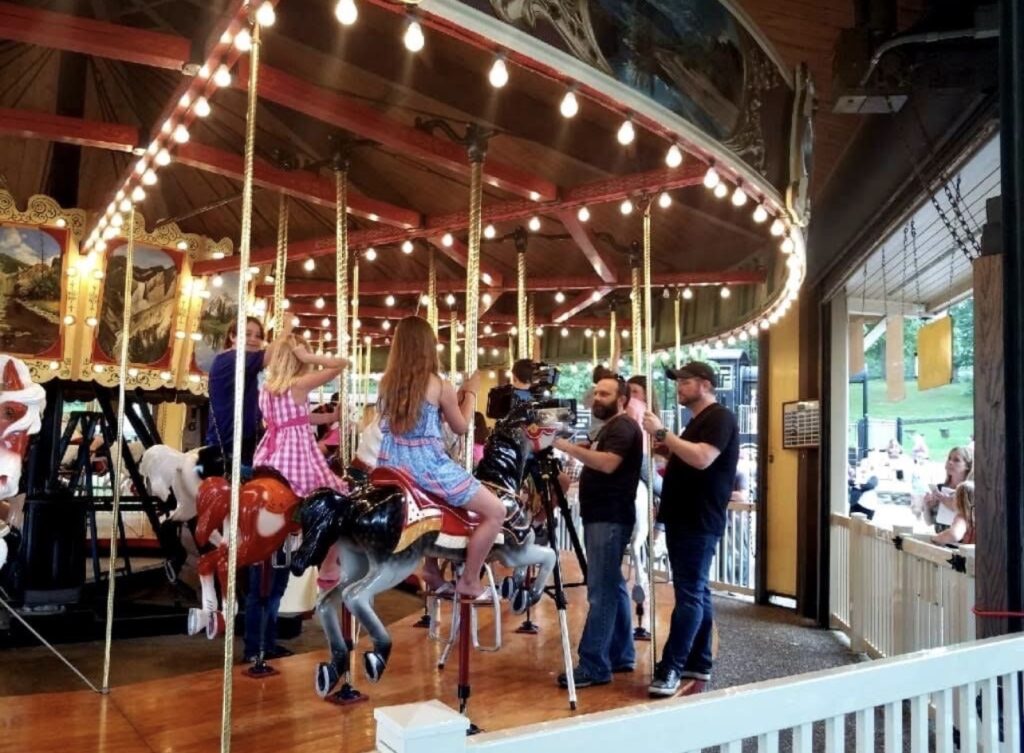
You’ve written and directed a number of shorts. What’s the challenge of taking the next step to a feature and how did the shorts prepare you?
I did produce a feature film called Made in Cleveland in 2012. It was an anthology project along the lines of Paris, je t’aime and New York, I love You, where we had multiple filmmakers who were from Cleveland, write and direct vignettes about “love in Cleveland.” It starred Busy Philipps from Freaks and Geeks and Gillian Jacobs from Community. Jamie Babbit, of Only Murders in the Building, also directed one of the shorts. So while it was a feature film that I directed three of the nine vignettes, I guess in a way it was still similar to directing shorts. But to answer your question about taking the next step, I guess the biggest challenge was just wanting to grow as a filmmaker and make a film that had something important to say and just take all the things I learned by making shorts and then extrapolate that into a major motion picture.
Suicide, mass shootings, homicidal psychosis and the enormity of life – what was the catalyst for you to get to a place to create this movie?
The original premise for the film was “what if you wanted to end it all but you had come into some money and you viewed that money as something you needed to rid yourself of before you could take the plunge?” But while writing the film, Robin Williams took his own life and that hit me hard. I thought “Wow. If someone like Williams, who seemed to have it all, money, fame, the adoration of the entire world, could do that, then no one is immune.” That was the turning point for me when I knew I needed to really research, study and understand mental illness so that I could make a film that treated the subject matter with respect and dignity.
At the same time, you still have some very funny moments in the film. How did you go about striking an appropriate balance?
I’m probably dating myself with this one, but I always say “If my movie was in a Blockbuster Video, I would want the staff to not be sure what wall to hang it on. Life is not a comedy. Life is not a drama. And I want my films to reflect that. Some films that really influence me are When Harry Met Sally, Garden State, Away We Go; movies that tread that line between comedy and drama. Writing comedy is not about “being funny.” It’s about being real. Comedy, for me, comes from truth. How regular people react to absurd or irregular situations.
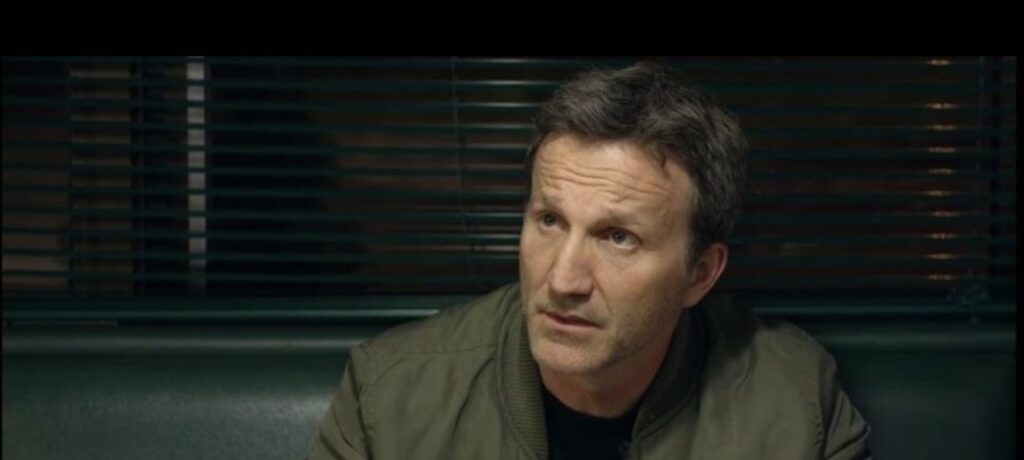
In the opening scene where Meyer attempts and fails to hang himself, how is this effect done?
I won’t give away our secrets. But what I can say is that we filmed that scene in a real condominium that was for sale. The owner had already moved out and gave us permission to shoot there. The building’s super, let us cut a hole in the ceiling and install support beams that could support Breckin’s weight. And we had one shot at bringing the ceiling fan crashing down. I think we bought the owner a new fan. Hopefully it helped the resale value of the home.
You need a real everyman for this film, and Breckin Meyer is about as everyman as it gets. How did he come to be involved?
So originally we cast Abby Elliott of Saturday Night Live to play the role of Jess. Her agent wanted to surround her with some talent from their roster, and we talked to some very well known actors from some stuff you might have heard of, Breaking Bad, The Walking Dead, Mad Men. But when Breckin Meyer, who I was a huge fan of, came on board, we just knew. He just got it. Eventually Abby had to drop out of the project and Emily Kinney eased right into the role.
How did you work with Emily Kinney in preparing her to play a struggling single mom?
I was obviously very familiar with Emily from her role as Beth Greene on The Walking Dead. So I was really ecstatic when she signed on. About a month before filming, I flew out to L.A. to meet with the cast and we all went to dinner. We talked for several hours about the script and my expectations and vision. I gave Breckin, Emily and Giselle Eisenberg all character breakdowns with backstories, hoping that would help them understand who I thought they were. Then leading up to filming, Emily and I had several phone calls, breaking down the script, and she had a lot of ideas. Everything from her wardrobe, hair and makeup to little tweaks to her dialogue. It was a really fun process.
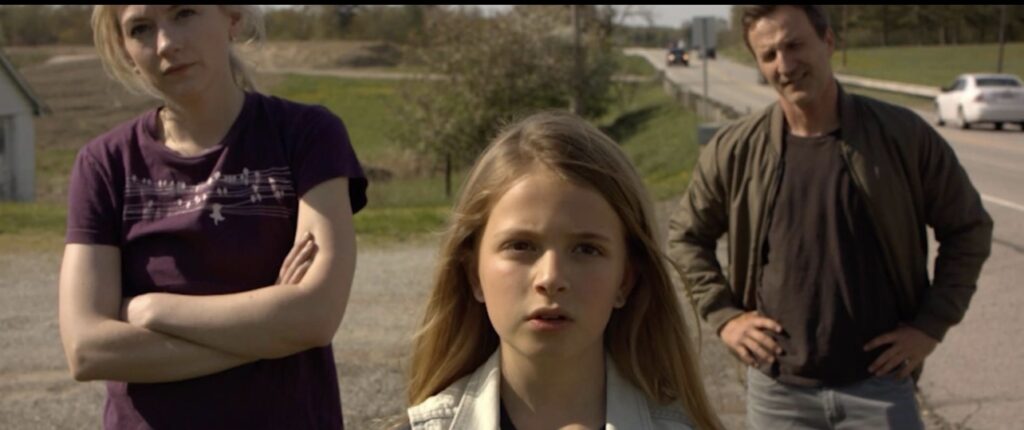
Tell us about how you were able to develop the chemistry between the two lost souls played by Emily and Breckin?
Our film was an indie film in every sense of the word. Having a budget under a million dollars can lead to challenges, but it can also lead to ingenuity and happy accidents. Since we shot everything on location, the actors often spent a lot of time together in between setups. With no trailers to go to in between takes, they hung out, talked out their lives, their characters and bonded. I wish I could take all the credit for their on screen chemistry but it really was a combination of Breckin, Emily and Giselle genuinely liking each other and understanding their characters. I guess my input was the writing, which they understood and followed it pretty closely.
This film has suicide as its central theme and resolves with a very different take. How did the story idea evolve in such a different direction?
Without giving away any spoilers, I’ll just say that we wanted to treat suicide and mental illness with dignity and respect. I researched the subject and even interviewed therapists. I knew I didn’t want to send the message that coming into some money or falling in love, magically cured you. Breckin was very adamant about that as well.
Giselle Eisenberg is wonderfully funny in the film. How hard was it to find a young kid who has the fatalistic timing and attitude to pull off the part, and how much did she crack up the crew and cast during the shoot?
I would work with Giselle every day of the week and twice on Sunday. She’s brilliant and wise beyond her years. I was a fan of her Sophia character on Life in Pieces, where she played a precocious scene stealer who had to keep up with some really heavy hitters like Diane Wiest, James Brolin and Colin Hanks. I was wowed by her from the pilot of that show. And funny story, about two years before we cast her, when I was still writing the script, I turned to my wife while watching her and said “how cool would it be to get that kid to play Jules?” The rest is history.
Tell us about the challenge of taking such extraordinary events and having them coexist alongside scenes and characters that are still mostly ordinary.
Again my writing style is not to be funny or to shock or to do anything but be truthful. Life is up and down, in and out and every which way in between. So to me it makes perfect sense that a story should easily transition from comedy to drama, to tragedy and back, because that’s what life does.
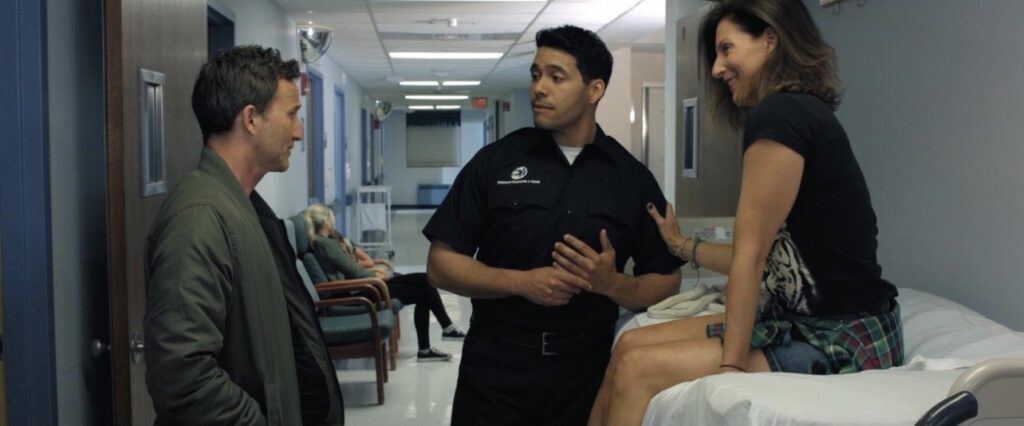
What was your biggest obstacle in shooting the film?
When you’re shooting on a smaller budget, you often don’t get the luxuries the bigger budget films get. I’m not talking about trailers, and caviar and private jets. I’m talking about rehearsal time or spending any kind of pre-production time on a location prior to filming. We did all of our rehearsals on set, the day of filming while the crew was setting up. Most locations, whether it be private residences, diners or a hospital, we typically had no more than two days in that location and rarely got to spend any time planning out shots before we arrived on the day of. I remember we were shooting in the hospital and they gave us an entire floor, which was great. But when we needed a conference room for Casey to speak with the detective and social worker, they didn’t have one. We basically shot that scene in a tiny empty office the size of a closet. But with movie magic and some very talented crew, we pulled it off.
Many indie filmmakers struggle with financing their films. How did you go about funding the project?
Luckily for me, I was somewhat known for making Made in Cleveland. I had a little bit of a reputation and some mojo from that. Couple that with the fact that we had a SNL cast member attached and we were able to attract a handful of investors. My producer Debra Herzog, who also plays Breckin’s sister in the film, had a lot of contacts with people who invested in real estate and she was able to “sell” our vision to them.
What message are you trying to convey about how enormous life is?
I don’t know if I ever intended to convey any specific message. I just wanted to tell a story that resonated with people. But after seeing the film a number of times and doing interviews like this I’ve had time to reflect on it. I think this movie is about how quickly we lose our innocence and how most of us never get it back, yearn as we may. We never know the exact moment it leaves us, but we do know the moment we realize it’s gone. I think this film is really about Giselle’s character Jules and her getting a second chance at innocence.
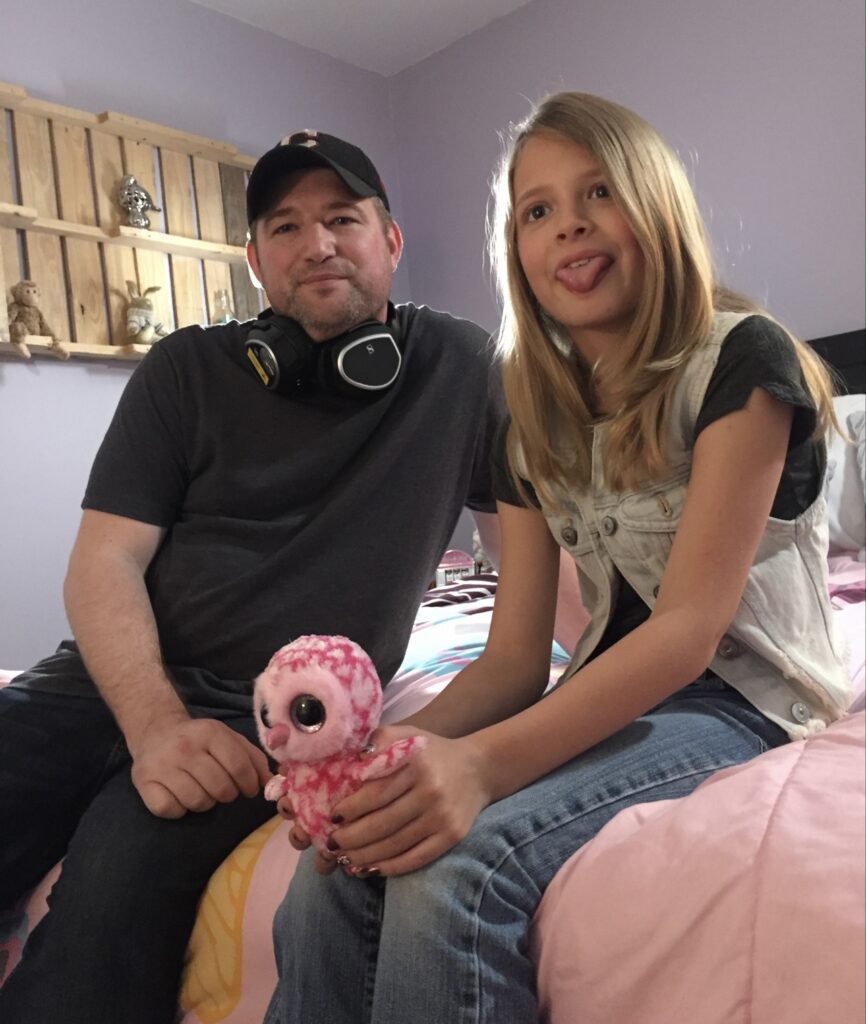
The bow you put on the end of the movie is magical. What is it like when that last piece falls into place?
I do remember the moment when we filmed that last scene. It was about 3 in the morning and when those carousel lights lit up we knew we had pulled off something special. That was an actual carousel that we had shipped in and built in someone’s back yard. It was quite spectacular and a moment I will cherish forever. Especially considering what that carousel symbolizes for me.
What are you looking forward to most in the film’s Festival run?
So our film got severely delayed by Covid. We shot it in 2018 and 2019. Then the pandemic shut everything down. Cannes, Sundance, everything. It was nearly impossible to get our film in front of distributors because there was no venue to do so. By the time we did land a sales agent, we had lost a lot of momentum. Then our distributor also fell on hard times as a result of Corona so we parted ways. Two years after the completion of the film we signed with a new distributor who believed in the film, promised to make it their top priority and “re-released” it. We didn’t really get a festival run per se, but we were nominated for Best Picture at the Paris Arts & Movie Awards Festival and Breckin won Best Actor in the fest. Now we’re excited to be on Amazon where I hear it’s performing well in the first few weeks. Hopefully the same will hold true for Apple TV, Fandango, etc.

What’s next for you?
I’m currently in development on an as yet to be titled streaming series with Emily Kinney. We’re still in the writing stages, developing the first season’s arc. But can’t wait to bring that to the small screen, something I’ve been really excited to do for a long time. Stay tuned, it’s going to be pretty wicked.
RELATED LINKS:
https://take2indiereview.net/2021/04/the-enormity-of-life/

